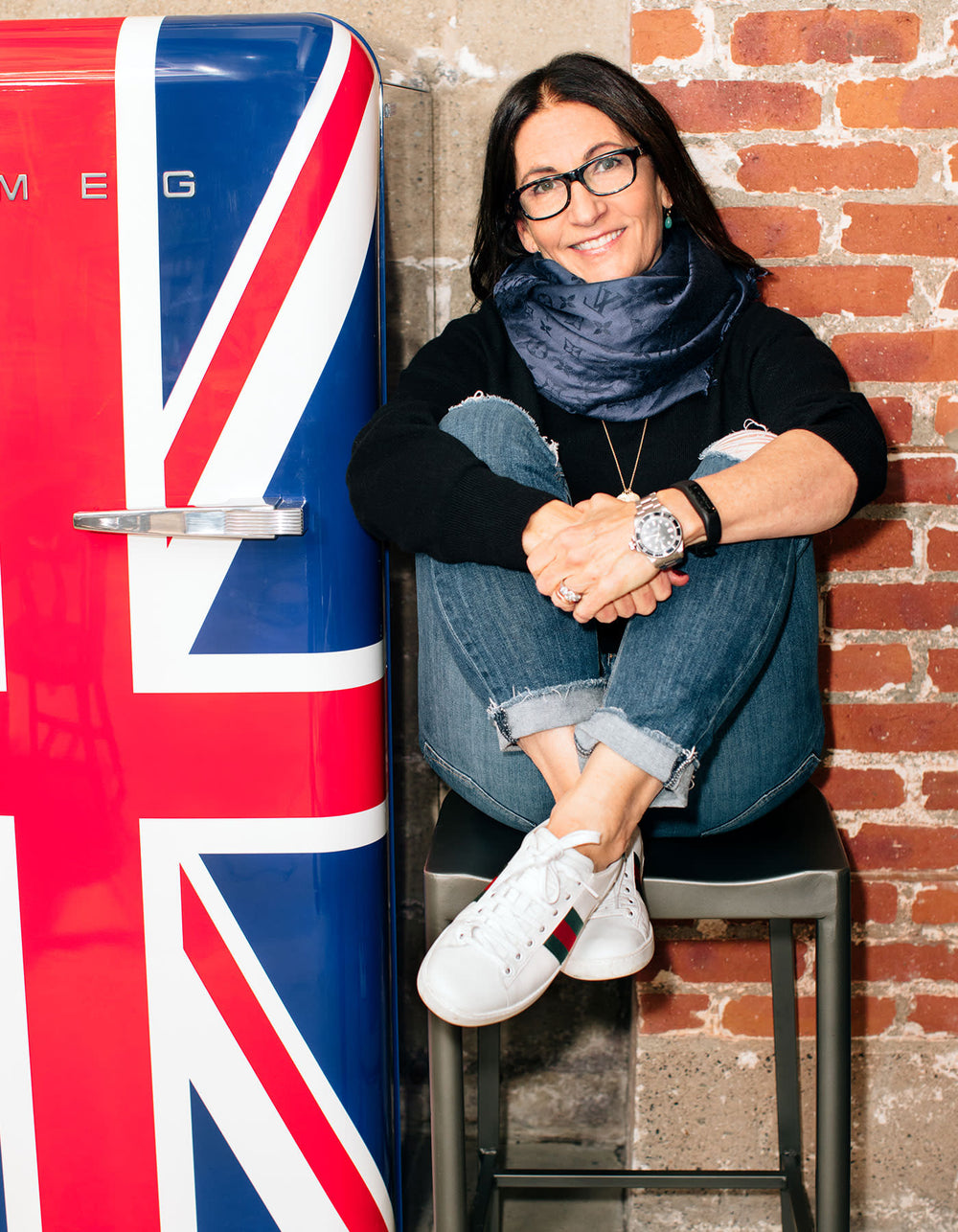Diary / Beauty / Jan 12, 2024
Should You Put on Moisturizer or Sunscreen First?
Written by: Piper Gray
Photography by: Ben Ritter & Jon Patterson

In the skincare world, the product application sequence is incredibly important for effectiveness. A common question we hear is whether to apply moisturizer or sunscreen first.
This isn't just a matter of routine preference, either. It's about understanding how these products interact with your skin and with each other. The right order can significantly impact the protection and hydration your skin receives. Plus, it can mitigate any pilling or caking when you put your makeup on top.
As skincare experts, our aim is to guide you through making informed decisions that enhance your natural beauty, staying true to our ethos of simplicity and clean beauty.
What Do Moisturizers and Sunscreen Do?
Before looking at the order of application, it's essential to understand the primary functions of moisturizers and sunscreens.
- Moisturizers are designed to hydrate the skin, locking in moisture and sometimes providing additional nutrients. They come in creams, lotions, and gels, each suited to different skin types.
- On the other hand, sunscreens protect the skin from harmful UV rays. They contain active ingredients that either absorb or reflect UV radiation, preventing damage to the skin.
Both moisturizers and sunscreens are fundamental in a comprehensive skincare routine, offering benefits that are essential for maintaining healthy, resilient skin.
What Is the Science Behind Skincare Layering?
The effectiveness of skincare products is not just about what you apply but also how and in what order. Skincare layering is a science that makes sure each product is absorbed and works effectively.
The general rule of thumb is to apply products from the thinnest to the thickest consistency. This approach allows lighter products to penetrate the skin easily without being blocked by heavier ones.
But, when it comes to moisturizer and sunscreen, it's not just about consistency. It's also about function.
Moisturizers are meant to penetrate the skin and hydrate it, while sunscreens are designed to sit on top of the skin and act as a shield against UV rays. Understanding this functional difference is key to determining their order of application in your daily skincare regimen.

What Are the Benefits of Applying Moisturizer First?
Applying moisturizer before sunscreen is rooted in science and practical skincare knowledge. Here are the key reasons why this sequence is beneficial:
- Enhanced Absorption: Moisturizers absorb into the skin, providing hydration and preparing the skin for the products that come after. When applied first, they create a hydrated base that can improve the application and effectiveness of sunscreen.
- Barrier Function: Well-moisturized skin has a strengthened barrier function. This means that when sunscreen is applied on top, the skin is more resilient and can better handle the protective agents in sunscreen without irritation.
- Avoiding Dilution: By applying moisturizer first, you ensure the sunscreen's protective layer isn't diluted. Mixing sunscreen with other products can compromise its UV filtering efficacy.
- Smooth Application: Moisturizers can help create a smooth, even canvas on the skin. When sunscreen is applied over a moisturized surface, it spreads more evenly, reducing the risk of missed spots and uneven protection.
Why Should You Put on Sunscreen Last?
Sunscreen is arguably the most crucial step in your daytime skincare routine, especially for protecting your skin from harmful UV rays.
Here's why it should be the last step:
- Direct Protection: Sunscreens form a protective barrier on the skin's surface. Applying it last keeps this barrier intact, shielding your skin from UV radiation.
- Maximized Efficacy: For sunscreen to work, it needs to form an unbroken layer on the skin. Applying it after moisturizer ensures it retains its protective properties without being mixed or diluted with other products.
- Long-Lasting Protection: Applying sunscreen last also means it's the freshest layer, offering maximum protection for as long as possible. Reapplication throughout the day should also follow the same principle: over makeup or other skincare products.
- Compliance With SPF Ratings: The SPF rating of a sunscreen is based on the assumption that it's the final layer on the skin. To achieve the advertised level of protection, applying it as the last step in your routine is crucial.
Product Recommendations and Tips
Choosing the right moisturizer and sunscreen for your skin type is paramount. When selecting products, consider your skin's specific needs and sensitivities. Remember, the best skincare routine is one that you can consistently follow while feeling confident in your skin.
Those with dry skin should opt for moisturizers rich in hydrating ingredients like hyaluronic acid or shea butter, found in our Miracle Cream. Oily skin benefits from lighter, water-based moisturizers, such as our Light Moisture Cream or Oil-Free Moisturizer.
When it comes to sunscreen, broad-spectrum formulas with an SPF of 30 or higher are ideal for all skin types. This is important, too: read the directions and make sure you apply enough sunscreen with enough time for it to absorb before exposure to the sun.
Common Misconceptions and Mistakes
Let's debunk some common myths about moisturizer and sunscreen application:
Myth: Sunscreen only needs to be applied to visible areas.
Truth: UV rays can affect all exposed skin. Apply sunscreen to all areas your clothes don’t cover, including the neck and ears.
Myth: You don't need sunscreen if your moisturizer has SPF.
Truth: While moisturizers with SPF provide some protection, they are often not applied liberally enough to offer full protection. It's best to use a separate sunscreen to ensure adequate coverage and protection.
Myth: Moisturizers should be fully absorbed before applying sunscreen.
Truth: While it's important to let your moisturizer settle, waiting for total absorption isn’t necessary. Wait a bit to make sure your sunscreen’s efficacy doesn’t get diluted if you’re blending it into still-wet skin.
Myth: The order of application doesn't matter if you wait long enough between products.
Truth: Applying sunscreen first can impact its ability to form an effective barrier on the skin. The correct order of application is essential.
How Do I Craft a Daily Skincare Routine?
Incorporating the correct use of moisturizer and sunscreen into your daily routine doesn’t have to be complicated.
Here are some additional tips for seamless integration:
- Start With a Clean Base: Always begin with clean skin. Use our gentle Cleansing Stick to remove impurities, setting the stage for effective moisturizing and sun protection.
- Consistency Matters: Apply moisturizer every day to keep skin balanced and dry patches at bay.
- Sunscreen Application: Use about a teaspoon of sunscreen for your face and neck. Don’t forget to apply it to often-missed areas like your hairline and the tops of your ears.
- Reapplication Is Key: If you’re outdoors, remember to reapply sunscreen every two hours, especially after sweating or swimming.
- Evening Routine: While sunscreen isn't needed at night, a good moisturizing routine before bed aids in skin repair and rejuvenation.
The Bottom Line
Understanding the correct order of moisturizer and sunscreen application is about as important as drinking enough water every day. By applying moisturizer first and sunscreen last, you're enhancing the benefits of each product and ensuring that your skin receives the full spectrum of care it deserves.
At Jones Road, we believe in uncomplicated yet powerful skincare routines that bring out your natural beauty and protect it. We encourage you to embrace these steps in your daily regimen, seeing them as an investment in the health and radiance of your skin.
Remember, beauty is not about masking but about enhancing, and it starts with the right skin care practices. Explore our range of products designed to complement this philosophy, and take your first step toward a beauty routine that truly reflects your natural elegance.
 Miracle Balm
Miracle Balm
 The Face Pencil
The Face Pencil
 What The Foundation
What The Foundation








